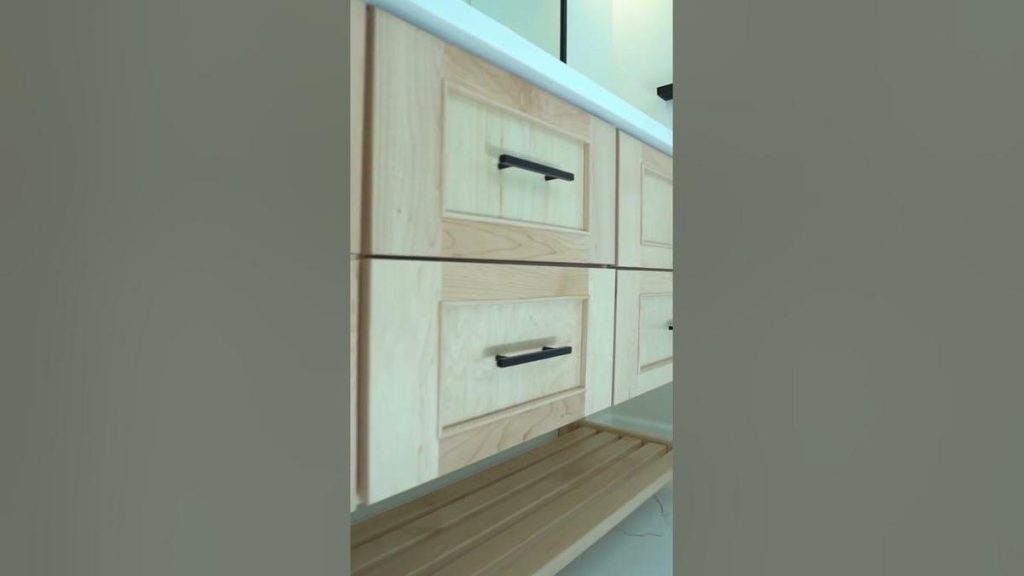The costs of room extensions often catch homeowners by surprise, impacting both the budget and the overall project timeline. Understanding the primary factors that influence these costs is essential for anyone considering this substantial home improvement. Significant cost drivers include materials, labor, and the often-overlooked nuances of design complexity and regional pricing variations.
Materials and labor can constitute a significant portion of the budget, with labor alone accounting for 30% to 50% of the total cost. Additionally, geographical location can heavily sway pricing due to local labor rates and material availability. Recognizing these elements not only aids in effective budgeting but also maximizes the value derived from the investment, ensuring smarter financial planning and potentially significant savings over the project’s lifecycle.
Key Takeaways for Room Extensions Costs
Understand Cost Drivers: Materials and labor are the primary cost contributors, with labor accounting for 30% to 50% of the total budget. Design complexity and regional variations also significantly impact costs.
Plan for Regional Variations: Urban areas often have higher labor and material costs due to increased demand, while rural areas may have lower costs but higher transportation expenses.
Factor in Design Complexity: Simple designs requiring minimal structural changes are more affordable than intricate designs with custom features and additional permits.
Estimate Average Costs: Room extensions typically cost \$80 to \$200 per square foot, with total project costs ranging from \$30,000 to \$50,000, depending on size, scope, and material choices.
Break Down Expenses: Key cost components include permits, design fees, labor, materials, and finishing touches. Allocating funds to each phase helps in effective budgeting.
Choose Cost-Saving Strategies: Compare quotes from multiple contractors, opt for simpler designs, and consider prefabricated options to reduce overall costs.
Account for Single-Story vs. Multi-Story Extensions: Single-story extensions are more affordable, costing $25,000 to $75,000, while multi-story additions exceed $75,000 due to structural complexities.
Include a Contingency Fund: Allocate at least 20% of the budget as a buffer for unexpected expenses, such as structural issues or material price increases.
Use Estimation Tools: Online calculators and professional consultations provide personalized cost estimates and aid in realistic budget planning.
Prioritize Quality Over Extras: Focus on essential elements like structural integrity and functionality to avoid unnecessary costs while ensuring long-term value.
Understanding Room Extension Costs: Key Factors
When planning a room extension, materials and labor are two primary cost drivers. The selection of materials, ranging from standard to luxury finishes, significantly impacts the overall budget. High-quality wood, brick, or sustainable options can raise costs, while more economical materials might offer savings. Labor costs, constituting 30% to 50% of the total budget, also vary based on the complexity and duration of the project. Regional labor rates can influence these expenses, making it essential to consider local market conditions when budgeting for room extensions.
Design complexity is another crucial factor affecting room extension costs. Simple designs requiring minimal structural changes tend to be more budget-friendly. In contrast, intricate designs with custom features can considerably increase expenses. The need for specialized contractors or additional permits can add to the cost. Regional pricing differences further complicate this picture, with urban areas typically commanding higher prices for both materials and labor compared to rural locations. These disparities necessitate careful planning and consideration during the budgeting phase.
Understanding these cost factors is vital for effective budgeting and maximizing value in room extensions. Homeowners can make informed decisions by evaluating material choices, labor requirements, and design complexities tailored to their specific needs and budget constraints. Recognizing the influence of regional pricing trends is also crucial, as it helps in setting realistic expectations and avoiding budget overruns. By thoroughly analyzing these aspects, homeowners can strategically plan their room extensions, ensuring they achieve the desired outcome without financial strain[1].
Exploring Average Costs for Room Extensions
The cost of room extensions varies significantly, with national averages ranging from $80 to $200 per square foot. Homeowners generally spend between $30,000 to $50,000 on a standard room extension, though this can fluctuate based on various factors. The project’s scope, including room size and design complexity, plays a crucial role in determining the final cost. Larger extensions naturally require more materials and labor, increasing the overall expenses. Additionally, the choice of materials—whether opting for standard or high-end finishes—can further influence these averages.
Several factors contribute to the overall cost of room extensions, impacting both per square foot pricing and total expenditures:
- Room Size: Larger spaces cost more due to increased material and labor needs.
- Project Scope: The complexity and features of the extension can raise costs.
- Material Selection: Luxury finishes lead to higher expenses compared to standard options.
- Location: Regional cost variations affect labor and material pricing.
- Design Complexity: Custom designs require specialized work, increasing costs.
Understanding these averages and contributing factors can help homeowners plan and budget effectively, ensuring their room extension projects deliver both value and satisfaction. By considering these elements, one can make informed decisions that balance cost with the desired quality and functionality.
Room Extension Cost Breakdown

Understanding the cost breakdown for room extensions involves identifying several key components that contribute to the total expenditure. These include permits, design fees, construction, and finishing touches. Permits are necessary to ensure compliance with local building codes and can vary in price depending on the project’s scope and location. Design fees cover the cost of architectural plans and are influenced by the complexity of the extension. Construction costs are typically the largest portion of the budget, encompassing labor, materials, and equipment. Finishing touches, such as painting and flooring, also add to the overall expense, with choices ranging from basic to premium finishes.
Labor and materials are significant factors in determining the cost of a room extension. Labor costs, which account for 30% to 50% of the total budget, depend on the project’s complexity and the local market rates for skilled workers. Materials can drastically influence costs based on quality and type, with luxury options driving up expenditures. For instance, choosing high-quality wood or brick over standard materials can significantly raise the budget. The interplay between labor and materials necessitates careful planning to balance quality with affordability, ensuring the extension meets both aesthetic and functional requirements.
Regional variations further impact the cost breakdown for room extensions. Urban areas generally experience higher labor and material costs due to increased demand and living expenses. Conversely, rural locations might offer lower prices, but accessibility and transportation of materials can add to costs. These regional differences underscore the importance of researching local market conditions and obtaining quotes from multiple contractors. By understanding these variations, homeowners can better anticipate expenses and plan their budgets accordingly, ensuring a successful and cost-effective room extension project[1].
Cost-Saving Strategies for Room Extensions
When planning a room extension, obtaining multiple quotes from different contractors is a fundamental strategy to ensure cost-effectiveness. By comparing these estimates, homeowners can identify competitive pricing and services, allowing them to make informed decisions. Additionally, opting for simpler designs can significantly reduce costs. Simple layouts that require fewer structural changes and materials are generally less expensive, as they minimize labor and resource expenditure. Prefabricated extensions also present a budget-friendly option, as they are often more economical in terms of both time and materials.
Considering a DIY approach for room extensions can be tempting, but it comes with notable risks. While taking on certain tasks yourself may initially appear to offer savings, the potential for costly mistakes is high. Structural issues, incorrect installations, and the need for permits can lead to increased expenses if not handled correctly. Furthermore, the lack of professional expertise might result in delays and compromises in quality. Thus, while DIY projects can reduce costs, they require careful planning, skills, and a clear understanding of the complexities involved.
To effectively cut costs without compromising quality, homeowners can employ the following strategies:
- Negotiate with Contractors: Discussing terms and potential discounts can lead to significant savings.
- Utilize Standard Materials: Choosing standard over luxury materials can greatly reduce expenses while maintaining functionality.
- Plan for Off-Peak Construction: Scheduling the project during less busy periods may lower labor and material costs due to reduced demand.
By incorporating these strategies, homeowners can maximize value and savings in their room extension projects, achieving desired results within their budget constraints.
Comparing Types of Room Extensions and Their Costs
Single-story and multi-story extensions offer distinct benefits and pricing differences, impacting homeowners’ decisions based on budget and space needs. Single-story extensions are typically more affordable, with costs ranging from $25,000 to $75,000. They involve simpler structural changes, requiring fewer permits and less labor, which contributes to their cost-effectiveness. In contrast, multi-story additions, while adding significant space, can be more expensive due to the need for reinforced foundations and additional structural support. These projects often extend beyond the $75,000 mark, as they entail more complex engineering and design efforts. The choice between these options depends on factors like available space, budgetary constraints, and long-term property value enhancement goals.

Several factors influence the pricing differences between these room addition styles. Structural requirements are a key determinant, as multi-story extensions necessitate more robust support systems to ensure safety and stability. Design complexity also plays a significant role; intricate designs with custom features can significantly increase costs compared to more straightforward plans. Additionally, the choice of materials and finishes—whether opting for standard or luxury options—affects the overall budget. Homeowners should carefully evaluate these considerations to select an extension style that aligns with their financial capabilities and desired outcomes, ensuring both practicality and aesthetic appeal.
Planning a Room Extension Budget

Setting a realistic budget is essential when planning a room extension to ensure the project progresses smoothly without unexpected financial strain. A well-structured budget should account for all foreseeable expenses, including permits, materials, labor, and design fees. To safeguard against unforeseen costs, it is advisable to allocate a contingency fund of at least 20% of the total budget. This additional buffer provides flexibility to address potential issues, such as unexpected structural challenges or changes in material prices, without derailing the project.
Various tools and resources are available to assist homeowners in estimating the costs of room extensions accurately. Online budgeting calculators provide personalized estimates based on project specifics, such as size, location, and material preferences. These tools can help in creating a detailed financial plan that aligns with the homeowner’s vision and financial capacity. Consulting with professional contractors and obtaining multiple quotes can also offer valuable insights into realistic pricing, enabling homeowners to make informed decisions about their extensions.
Effectively managing the budget throughout the room extension project involves careful planning and constant monitoring. Regularly reviewing expenditures against the budget helps in identifying any deviations early on. Homeowners should prioritize essential elements, such as structural integrity and functional needs, over cosmetic upgrades to maintain financial discipline. Additionally, maintaining open communication with contractors ensures that any changes in scope or unexpected issues are promptly addressed, allowing for timely adjustments to the budget and preventing cost overruns.
FAQs for Room Extensions Costs
How much does it cost to add a 12×12 room to a house?
Adding a 12×12 room typically costs between $18,000 and $36,000 . This includes basic materials and finishes for a 144 square foot space, suitable for a bedroom or guest room. However, remember that costs can fluctuate based on your location, materials, and labor
What is the cost of a 400 sq ft master suite addition?
A 400 sq ft master suite addition can range from $82,000 to $210,000 . This usually includes a bedroom, bathroom, and closet. Costs vary based on factors like bathroom fixtures, plumbing, and overall design complexity
How much does a 20×20 room addition cost?
A 20×20 room addition generally costs between $50,000 and $100,000 . This 400 square foot space can serve as a family room, living room, or dining area. Remember that location, design complexity, and material choices influence the final cost.
Is it expensive to extend a room?
Yes, room extensions can be a significant investment. Costs typically range from $80 to $200 per square foot , depending on the project’s size, materials used, and whether you need plumbing or electrical work
What is the average cost per square foot for room extensions?
The average cost for room extensions is $80 to $200 per square foot . This can vary based on factors like the room type, location, and materials used. For example, a bathroom addition might cost more due to plumbing fixtures.
How can I calculate room extension costs?
To estimate costs, consider the size of the extension, desired materials, and labor costs in your area. Online calculators can help with this process . Remember to include expenses for permits, inspections, and potential upgrades to your home’s systems.
What are the cost components of room extensions?
Room extension costs include design fees, permits, materials, labor, and finishing touches . Labor and materials are significant cost drivers, and their prices vary by region. Don’t forget to factor in potential costs for plumbing, electrical work, and HVAC systems.
How can I reduce room extension costs?
To reduce costs, opt for simpler designs, compare quotes from multiple contractors, and consider purchasing materials yourself . Explore using reclaimed materials or less expensive alternatives for certain fixtures and finishes
What are the differences in costs between single-story and multi-story extensions?
Single-story extensions are generally less expensive, ranging from $25,000 to $75,000, while multi-story additions typically incur higher costs due to added structural requirements.
Conclusion
Navigating the complexities of room extensions cost involves understanding key factors like materials, labor, and design intricacies, with regional differences playing a significant role. Average costs vary, influenced by project scope and room size. Breaking down expenses into design, construction, and finishing phases offers clarity on where your investment goes.
Cost-saving strategies, such as obtaining multiple quotes and considering prefabricated solutions, can effectively reduce expenses. Comparing different extension styles reveals how structural demands impact pricing. These insights empower homeowners to plan and execute extensions that enhance functionality and increase home value.
Start Your Northern Virginia Home Addition Remodeling Journey Today
Remodel your home with Elegant Kitchen and Bath, offering various services including kitchen remodeling. Discover our unique services via our kitchen projects.
Elegant Kitchen and Bath, offers kitchen remodeling, bathroom remodeling, basement remodeling, and home addition remodeling services across a broad area, including
Herndon, Chantilly, Centreville, Reston, Sterling, GreatFalls, Ashburn, Fairfax, McLean, Manassas, Haymarket, Burke, Vienna, Falls Church, Annandale, Springfield, Alexandria and Arlington.
Ready to transform your home with a licensed contractor?
Visit Elegant Kitchen and Bath to start your journey toward your modern home today.


